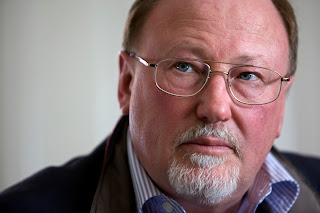Restaurants often follow the U.S. Green Building Council’s standards to give new or renovated facilities a greener tinge. But the points-based system doesn’t extend to such energy and water-saving measures as installing the right kitchen equipment, notes kitchen designer Josh Smith.
He’ll be part of a panel at the International Foodservice Sustainability Symposium that looks at sustainability practices that may not earn points in the USGBC’s LEED certification process.
Part of the presentation will deal with choosing equipment, says Smith, director of business development for Next Step Design in Annapolis, Md.
But also covered will be “philosophical things that are not tangible,” like systems and policies.
For instance, he says, the convention has long been to put refrigeration equipment inside a restaurant kitchen for the sake of convenience. But moving a walk-in outside the building shifts a heat-generator out of the production area, easing the burden on the exhaust system. It’s also easier to maintain that way, he adds.
Similarly, “not distributing water bottles in your restaurant” won’t get you any LEED points, but it’s a major step toward greater sustainability, says Smith.
He’ll be joined on the Sustainable Building & Kitchen Design panel by a Next Step colleague, designer Russell Stillwell, and an architect, Peter Hapstack, a principle of hapstak demetriou + pllc.
The session is scheduled for Wednesday, May 25, at 1:30 p.m.
He’ll be part of a panel at the International Foodservice Sustainability Symposium that looks at sustainability practices that may not earn points in the USGBC’s LEED certification process.
Part of the presentation will deal with choosing equipment, says Smith, director of business development for Next Step Design in Annapolis, Md.
But also covered will be “philosophical things that are not tangible,” like systems and policies.
For instance, he says, the convention has long been to put refrigeration equipment inside a restaurant kitchen for the sake of convenience. But moving a walk-in outside the building shifts a heat-generator out of the production area, easing the burden on the exhaust system. It’s also easier to maintain that way, he adds.
Similarly, “not distributing water bottles in your restaurant” won’t get you any LEED points, but it’s a major step toward greater sustainability, says Smith.
He’ll be joined on the Sustainable Building & Kitchen Design panel by a Next Step colleague, designer Russell Stillwell, and an architect, Peter Hapstack, a principle of hapstak demetriou + pllc.
The session is scheduled for Wednesday, May 25, at 1:30 p.m.
